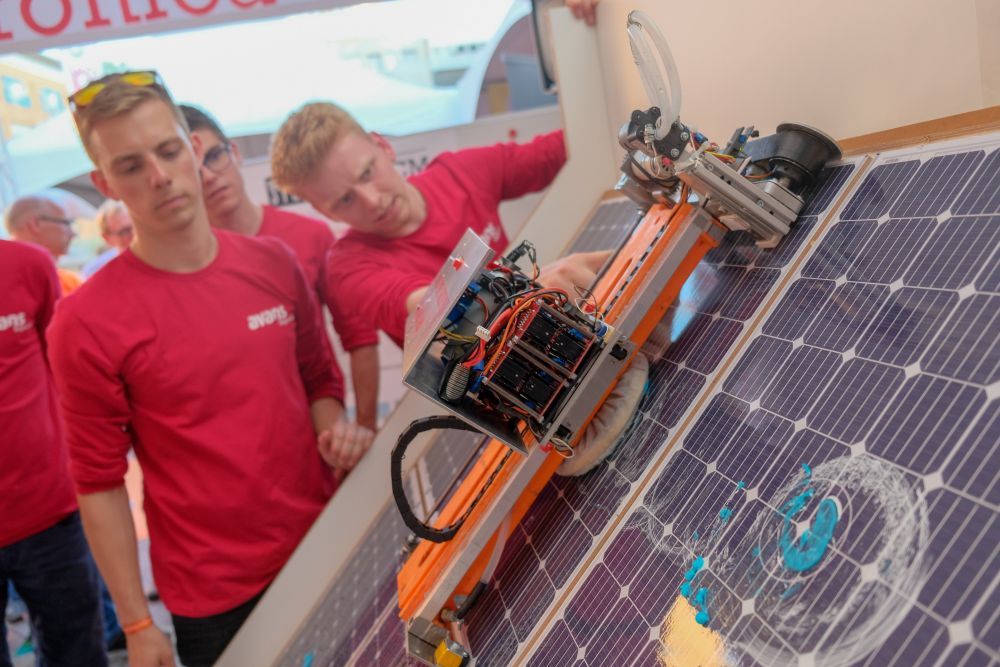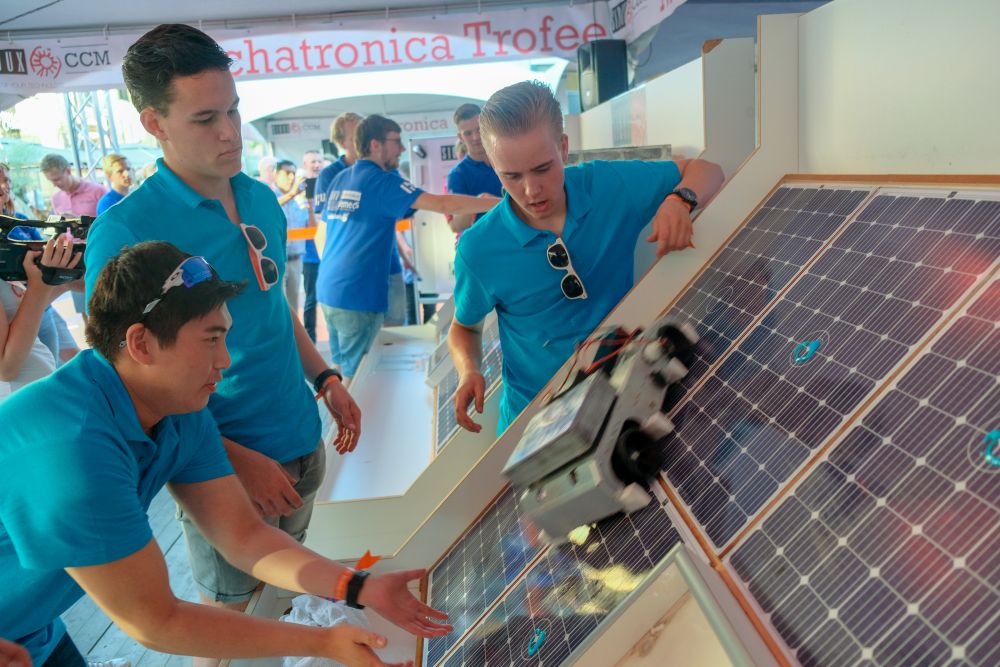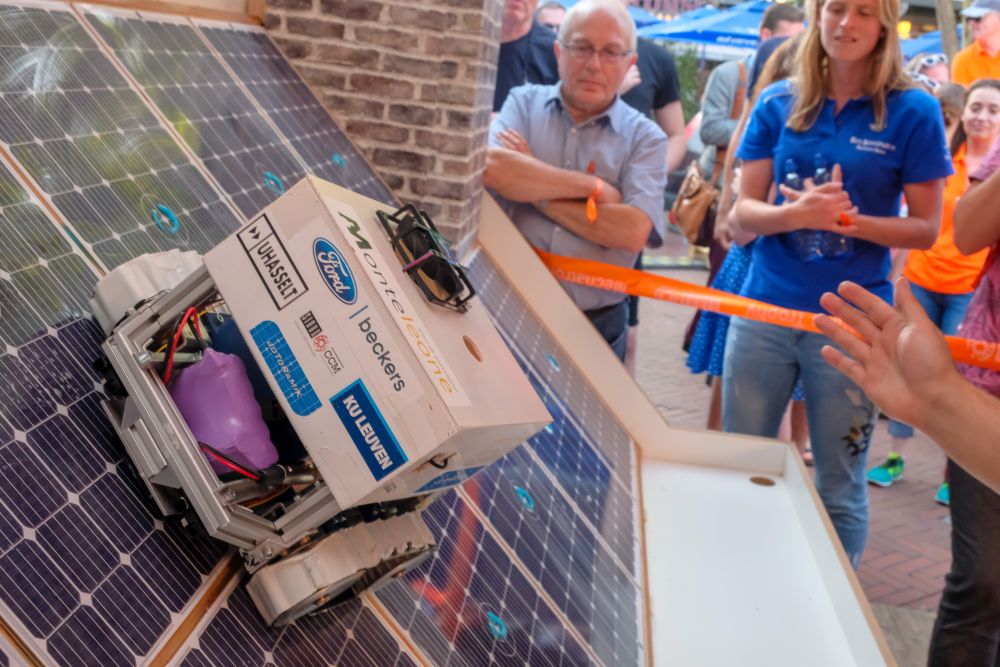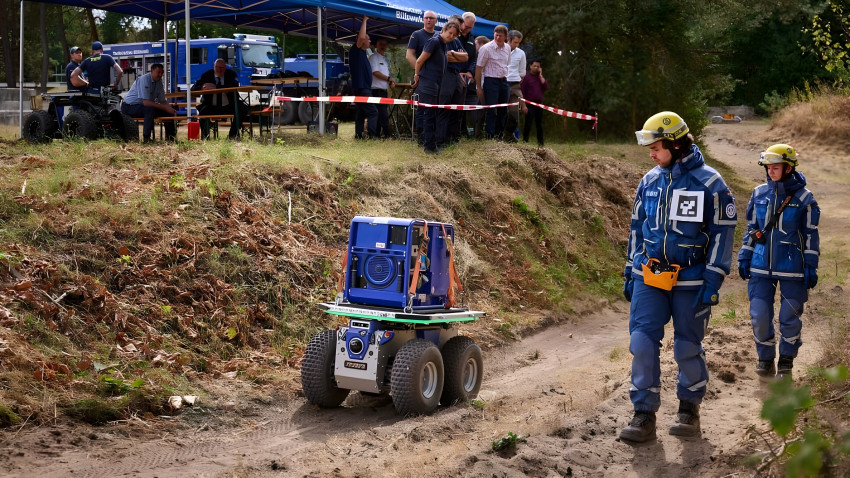
Competition for solar panel polishing robots
The best solar panel polishing robot was built by a team from the University of Hasselt. Twelve Benelux student teams competed against each other during the Dutch Technology Week in Eindhoven.
It is hard to imagine a more perfect day for cleaning solar panels. In Eindhoven city centre, the sun is blazing at 29°C onto the tents in which imitation domestic roofs were placed by high-tech company Sioux, which organised the Mechatronix Trophy: twelve student teams from Dutch-speaking Belgium and the Netherlands were to pit their robot designs against each other, each one around the size of a domestic printer, in the battle for the cleanest solar panel.

Self-steering
‘The art is to give the robot washers something that is just slightly too difficult, otherwise it'll all be too easy for them and you get robots that all look alike,’ says Wilbert Lommer, System Designer Mechanics at Sioux and joint designer of the competition. The major challenge this year is in making the device self-steering and getting it to drive up the surface at 45 degrees.
The students developed their robots in the past academic year. Of the sixteen teams that participated, four teams have already been eliminated as they did not manage to get the robots to work. All teams wrestle with the balance between grip and speed. Slightly too much grip and the robot won’t get far up the roof, too little and it falls down.
Falling off the roof
The latter happened to most participants in the qualifiers: one robot after another ended up on the street, and not one of the machines managed to complete the course of eight solar panels, a chimney and a skylight. Once in the final, they really have to show their mettle.

Four-strong team Assepoetster from Fontys University of Applied Sciences in Eindhoven are all crouching over their robot, busy fettling their creation. A few hours before the competition begins, they discover that one of the electrical components is not working – almost every team seems to find something that is not working. The Assepoetster vehicle is comparable to a car, says 18-year-old second-year mechatronics student Mike van Lieshout. 'The rear wheels are driven, the front wheels do the steering.'
Disappointed

In the end, none of the teams managed to achieve the maximum score. The ultimate winner – Probot from the University of Hasselt – manages a score of four clean panels in the final. ‘I'm a little disappointed with the result,’ concludes Lommer. ‘The students have hit the proverbial wall, but have learnt an awful lot from this exercise. That’s the most important thing.’ (Mathijs van Eeten)
If you found this article interesting, subscribe for free to our weekly newsletter!







